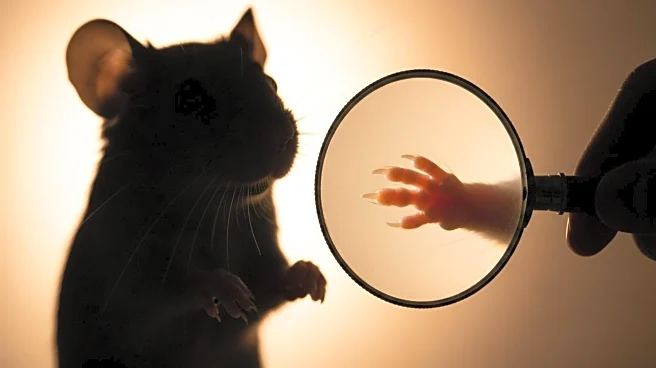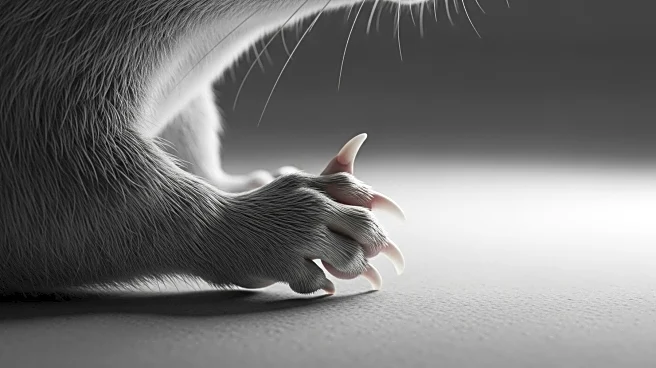What's Happening?
A recent study published in Science has revealed that most rodents possess thumbnails instead of claws, a trait that may have contributed to their evolutionary success. Researchers from the Field Museum in Chicago examined hundreds of rodent specimens to document the presence of thumbnails across various species. The study found that 86% of the rodent genera surveyed included species with thumbnails, which are believed to offer greater manual dexterity compared to claws. This feature allows rodents to handle and eat food more efficiently, potentially giving them an advantage in exploiting high-energy resources like nuts. The research team, including Rafaela Missagia and Gordon Shepherd, used museum collections and data from iNaturalist to reconstruct the rodent family tree, indicating that modern rodents likely descended from a common ancestor with thumbnails.
Why It's Important?
The discovery of thumbnails in rodents provides insight into their evolutionary success and adaptability, as rodents make up nearly half of all mammal species and are found on every continent except Antarctica. The ability to handle food with thumbnails may have allowed rodents to exploit unique resources, reducing competition with other animals and facilitating their diversification. This study highlights the importance of museum collections in understanding evolutionary biology and the role of physical traits in species survival. The findings also suggest a parallel with primates, including humans, who have evolved nails on their thumbs independently, showcasing convergent evolution.
What's Next?
The study opens avenues for further research into the evolutionary advantages of thumbnails in rodents and their impact on feeding habits and habitat preferences. Researchers may explore the correlation between thumbnails and arboreal lifestyles, as rodents with nails are more likely to live aboveground or in trees. Additionally, the study underscores the potential for museum collections to yield new discoveries, encouraging continued examination of preserved specimens for insights into evolutionary processes.
Beyond the Headlines
The presence of thumbnails in rodents not only informs their feeding strategies but also their ecological roles and interactions with other species. Understanding these dynamics can aid in conservation efforts and the management of rodent populations, which are often considered pests. The study also contributes to the broader understanding of convergent evolution, where similar traits evolve independently in different lineages, offering a glimpse into the adaptive strategies of mammals.














